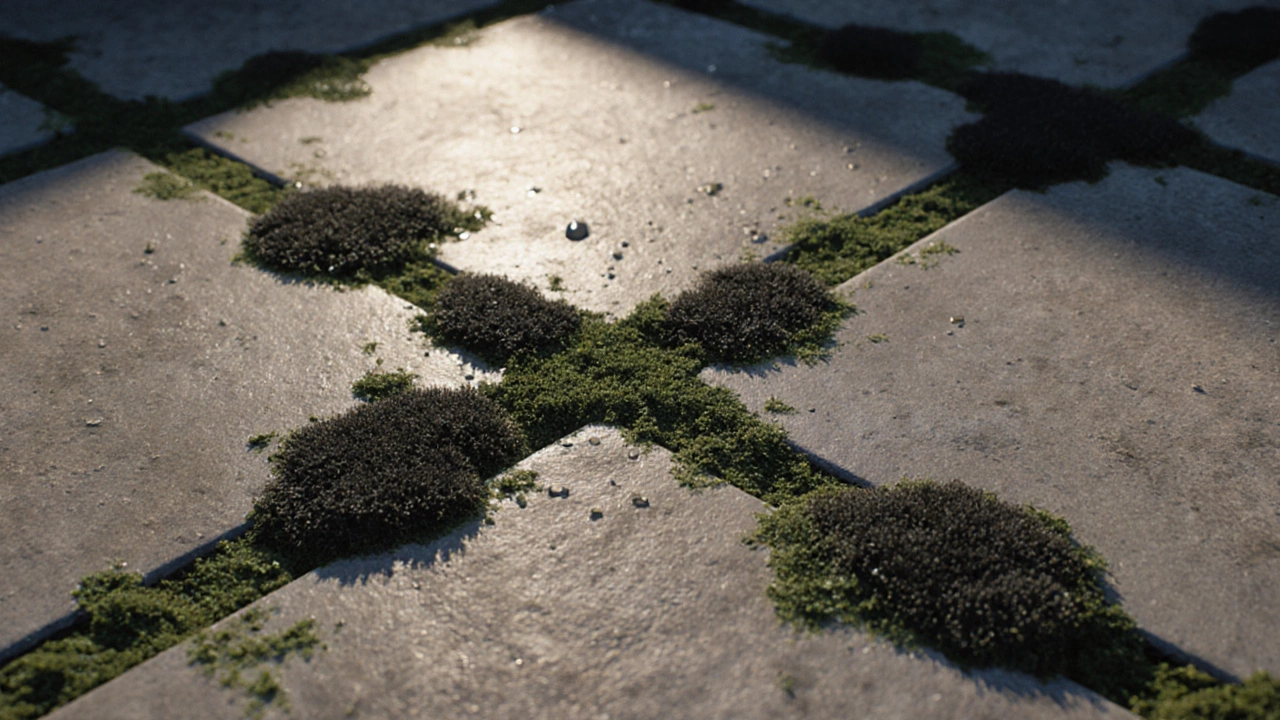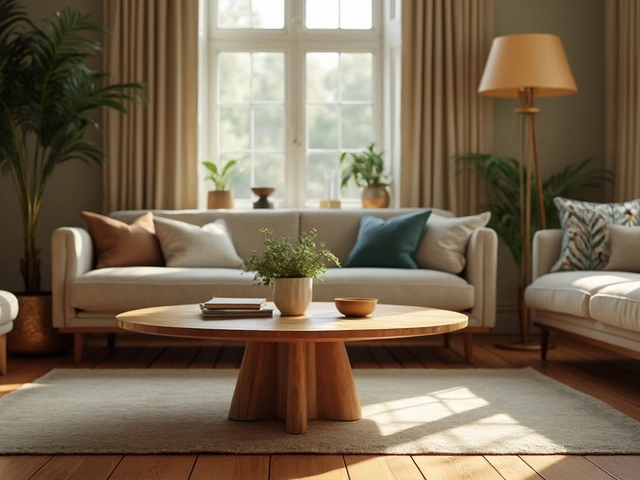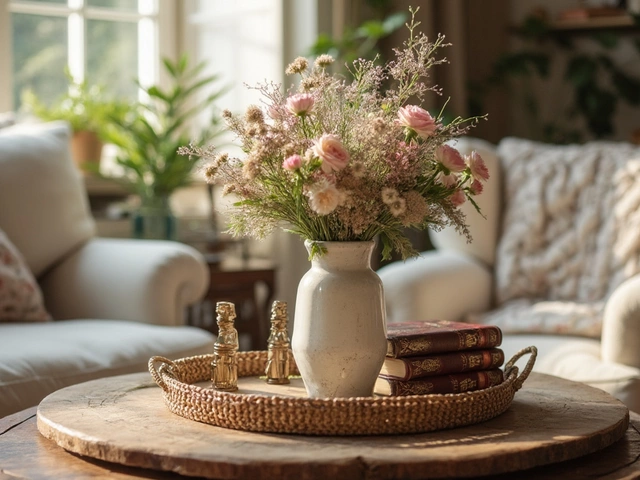Patio Mold Cleaner Selector
Spotting that black or green fuzz on your patio floor or outdoor furniture is a sign you need to act fast. Mold is a type of fungus that thrives in damp, shaded environments and can damage wood, concrete, and composite decking if left unchecked. This guide walks you through the safest, most effective ways to kill mold on a patio, how to choose the right cleaner, and what steps to take so the problem doesn’t return.
Key Takeaways
- Bleach, white vinegar, hydrogen peroxide, and baking soda are the top DIY cleaners for patio mold.
- Always test a small area first and wear protective gear.
- Proper rinsing, thorough drying, and regular sunlight exposure prevent regrowth.
- Pressure washing can speed up removal on concrete and stone surfaces.
- Maintain low humidity and good airflow around outdoor furniture.
Understanding Patio Mold
Most patio mold you’ll encounter belongs to the Aspergillus or Penicillium families, which love the mix of moisture from rain, dew, or sprinkler systems and the shade from overhanging trees or awnings. While not all molds are toxic, they can cause allergic reactions and degrade surfaces over time.
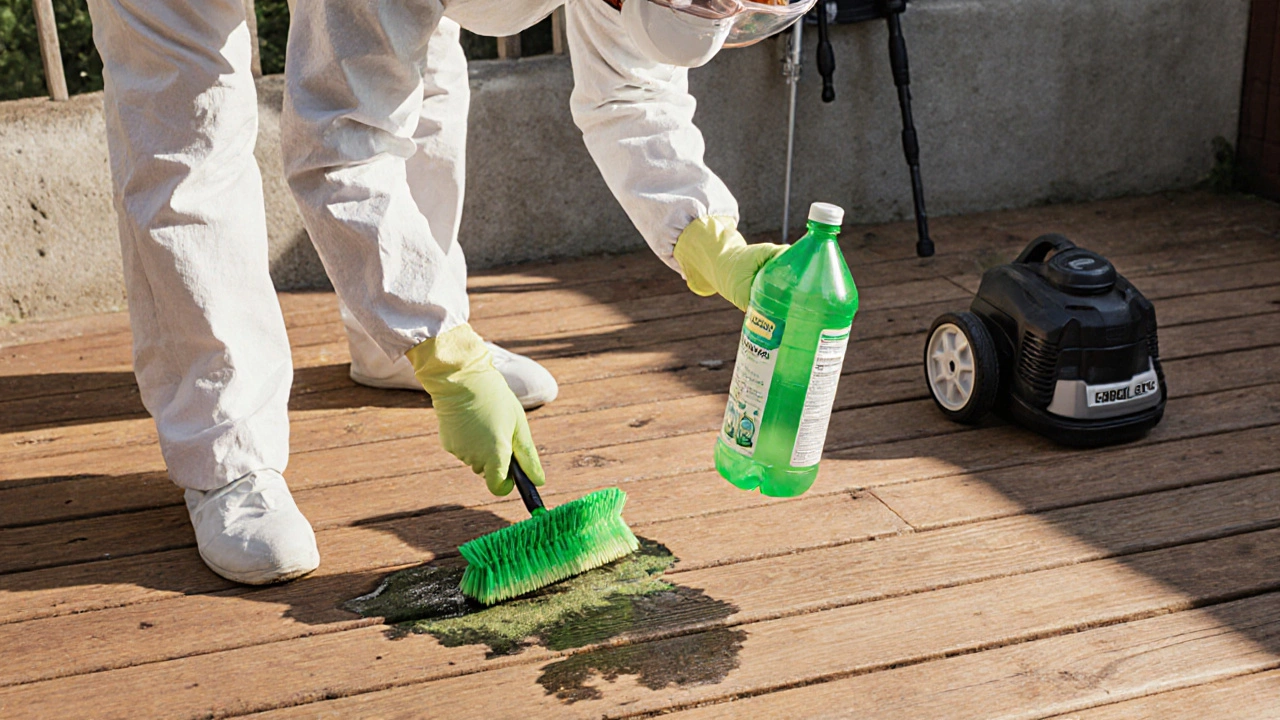
Top DIY Cleaners and How They Work
Below is a quick comparison of the most common household agents that can mold removal tasks.
| Agent | Effectiveness | Safety for Wood/Concrete | Cost (per litre) | Best Use Case |
|---|---|---|---|---|
| Bleach (sodium hypochlorite) | High - kills most mold spores | Can discolor wood; safe for concrete | ~$2 | Hard, non‑porous surfaces |
| White vinegar (5% acetic acid) | Medium - works well on mild growth | Gentle on wood and stone | ~$3 | Regular maintenance cleaning |
| Hydrogen peroxide (3%) | Medium‑high - oxidizes spores | Non‑staining, safe for most materials | ~$4 | Spot treatment on delicate surfaces |
| Baking soda (sodium bicarbonate) | Low‑medium - abrasive and deodorising | Completely safe for all patio materials | ~$1 | Pre‑scrub before applying liquid cleaners |
Step‑by‑Step Cleaning Methods
- Gather safety gear: gloves, goggles, and a mask to avoid inhaling spores.
- Clear the area: move outdoor furniture, plant pots, and décor to a clean surface.
- Pre‑scrub with baking soda: sprinkle baking soda on the moldy spot, scrub with a stiff brush, then rinse.
- For wood decking, limit scrubbing to avoid surface wear.
- Apply your chosen liquid cleaner:
- Bleach solution - mix 1 part bleach with 3 parts water.
- Vinegar - pour undiluted white vinegar into a spray bottle.
- Hydrogen peroxide - use straight 3% solution.
- Scrub again: use a soft‑bristle brush for wood or a nylon brush for concrete.
- Rinse thoroughly: a garden hose or Pressure washer on low pressure removes residue.
- For delicate wicker or fabric cushions, rinse with a gentle shower.
- Dry completely: let sunlight and air circulate; you can also use a portable fan.
Preventing Future Mold Growth
Even after a perfect clean, mold loves returning if conditions stay the same. Follow these habits:
- Sunlight - Trim overhanging branches to let at least 4‑6 hours of direct sun hit the patio each day.
- Humidity control - Use a hygrometer to monitor outdoor humidity; keep it below 60% when possible.
- Seal wood or composite decking with a waterproof stain every 2‑3 years.
- Install proper drainage to avoid standing water after rain.
- Move cushions and blankets indoors during prolonged damp weather.
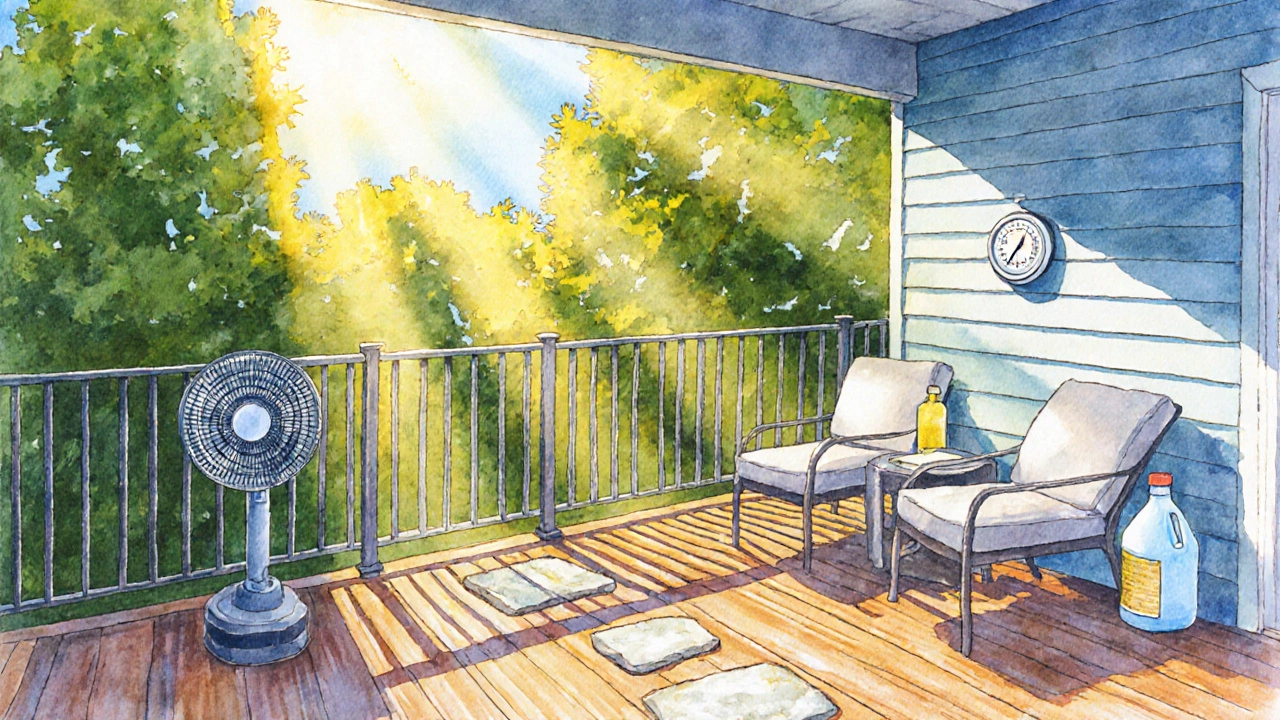
Special Cases: Materials and Weather
Different patio surfaces react uniquely to cleaning agents:
- Concrete & stone: Bleach works well, but always rinse to prevent discoloration.
- Wood decking: Prefer vinegar or hydrogen peroxide; bleach may cause grain darkening.
- Metal railings: A 1:1 bleach mix clears rust‑induced mold without corroding the metal.
- Outdoor fabric (e.g., umbrellas): Spot‑test vinegar first; avoid soaking as it can weaken fibers.
Troubleshooting Common Issues
Problem: Mold returns within a week.
Solution: Check for hidden moisture sources-leaky gutters, pooled water, or a broken sprinkler head. Also, re‑apply a sealant to wood surfaces.
Problem: Stains remain after cleaning.
Solution: Lightly sand the affected wood, then reseal. For concrete, a dedicated mold‑stain remover may be necessary.
Frequently Asked Questions
Is bleach safe to use on all patio surfaces?
Bleach is powerful but can discolor wood and some stone. For wood decks, a diluted solution (1‑part bleach to 3‑parts water) works, but always test a hidden spot first. Concrete and tile tolerate bleach well.
Can I use commercial mold spray instead of home remedies?
Yes, commercial products often contain stronger biocides, but they can be pricier and sometimes harsh on fabrics. Home remedies like vinegar or hydrogen peroxide are cost‑effective and safe for most materials.
How often should I treat my patio to keep mold at bay?
A light vinegar spray every two weeks during damp seasons, plus a deep clean after heavy rain, usually keeps mold under control.
Do I need to wear a mask when cleaning mold?
Absolutely. A N95 or similar respirator protects you from inhaling spores, especially when scrubbing or using bleach.
What’s the fastest way to dry a cleaned patio?
Sunlight is the most natural dryer. On overcast days, use a portable fan or a leaf blower to circulate air and speed up drying.
